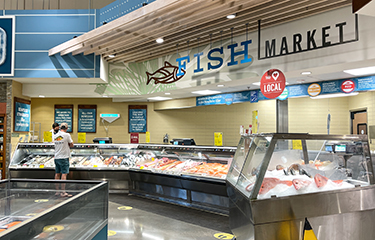The outlook for both retail and foodservice spending is strong for this holiday season and into 2022, but grocery stores are likely to see a bigger boost than restaurants, according to research firm NPD.
Nearly a third (29 percent) of Americans plan to spend more on holiday-related shopping than they did last year, according to new NPD research. Total holiday spending will rise 3 percent during the traditional November and December holiday shopping season, and 5 percent when the season is expanded to include October and early January, NPD found.
A separate estimate released by Deloitte estimated overall holiday retail sales are likely to increase between 7 and 9 percent, including growth in e-commerce sales of between 11 to 15 percent.
“We anticipate strong consumer spending for the upcoming holiday season. As vaccination rates rise and consumers are more comfortable being outside of the home, we are likely to see increased spending on services, including restaurants and travel, while spending on goods will continue to hold steady,” Deloitte U.S. Economic Forecaster Daniel Bachman said in a press release.
Thirty-four percent of shoppers said they will spend more on holiday groceries in 2021 versus last year, according to Field Agent. Walmart (65 percent) and Target (38 percent) are the top two retailers where consumers will purchase most of their holiday foods, snacks, and beverages, per The Food Institute.
Consumers plan to spend just over USD 997 (EUR 858) each on gifts, holiday items, and non-gift purchases for themselves and their families this year – on par with last holiday season, according to the National Retail Federation and Prosper Insights and Analytics.
While the grocery outlook is strong for 2021, the restaurant industry is still struggling, which may impact holiday traffic, NPD found.
Consumer spending at restaurants soared 32 percent in the second quarter of 2021 compared to the same quarter of 2020, according to NPD. However, labor shortages and inflation, along with consumers’ COVID-19 concerns, continue to put pressure on foodservice industry growth.
“There was consumer pullback because of the delta variant; it is an extremely volatile situation. The restaurant industry reflects many societal trends, and it can rapidly change,” B. Hudson Riehle, senior vice president of the National Restaurant Association’s Research and Knowledge Group, said during a recent National Fisheries Institute Global Seafood Market Conference webinar. SeafoodSource is providing exclusive coverage of the 2021 GSMC webinar series, which is presenting market-focused content throughout the year.
2021 is a “transition” year for the industry, as it has suffered more than USD 300 billion (EUR 258 billion) in losses since the start of the pandemic, Riehle said.
“This pandemic has been a unique situation,” Riehle said. “The industry is progressing somewhat in recovery, but there is still a long road ahead.”
Riehle cited a labor shortage of 625,000 jobs in the full-service restaurant sector alone and 1.4 million open jobs in the hospitality sector. Restaurant operators are facing the additional challenge of increasing costs, some of which have been passed along to consumers. Menu prices have risen 3.9 percent in 2021, compared to a 2.2 percent average price increase at grocery stores, according to Riehle.
Seventeen percent of restaurant operators report that they were hit by a “big increase” in seafood prices over the past three months and 57 percent said they were hit with general seafood price hikes, Datassential CEO Jack Li said during a recent Datassential Outlook 2022 webinar.
Thirty-eight percent of restaurant operators said they are “taking the hit” and absorbing the price increases on seafood, while 43 percent are passing along costs to their customers by raising menu prices.
Price-hikes could lead more consumers to seek convenient meal solutions at supermarkets rather than dining out, Riehle said.
“Consumers are quite knowledgeable about menu prices and there is a sizable gap now between menu and grocery price inflation. That price-value equilibrium calculates in where to source meal solutions," Riehle said.
While foodservice is “always ready to capture a large share of the trend, many of the retail solutions have become quite innovative,” Riehle said.
“In the end, the consumer looks for conveniently prepared meal solutions away from home, whether sourced form a virtual kitchen or retail," Riehle said.
Still, restaurant operators know they have to be “extremely sensitive to the spend of the consumer,” according to Riehle, particularly heading into next year as Americans’ real incomes are projected to decline.
“Consumers will need to become more [discerning] in how they spend,” Riehle said.
Photo courtesy of Joni Hanebutt /Shutterstock







